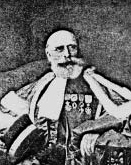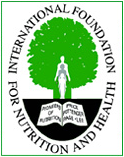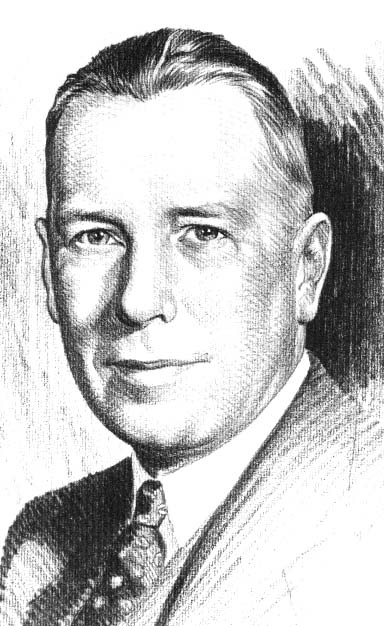Antoine Béchamp, MD, PhD.
(1816-1908)
Antoine Béchamp, MD, PhD.
(1816-1908)

On the 16th of October, 1816, at Bassing, in the department of Bas-Rhein, (France, since ceded to Germany), was born a child by whose name in the nineteenth century came to be known as Antoine Béchamp, He should have been recognized in the same way as Copernicus, Galileo and Newton. Unfortunately the magnitude of what professor Béchamp’s decades of research had to offer was buried and discredited by a jealous and flamboyant student named Louis Pasteur.
Antoine Béchamp died on the 15th of April, 1908, fourteen days after he was first visited by an aged American physician who had been in correspondence over the past several years on the subject of research and wonderful discoveries of Professor Béchamp and his collaborators. The American physician made his visit to Paris for the purpose of becoming personally acquainted with Professor Béchamp, who, as his family stated, had looked forward with eager anticipation to such a visit.
The translator had previously submitted to the professor, an extensive summary of his physiological and biological discoveries, and by him it was revised and approved.
The information to follow was intended to be introduced as a special chapter in an extensive work on inoculations and their relations to pathology, upon which the translator of this work had been engaged, almost exclusively, for some fourteen years.
“In the lengthy and nearly daily interviews between Professor Béchamp and myself before the his death, I suggested that instead of a summary it would be better to place before the English speaking peoples, an exact translation into their language. Some of the more important discoveries of Professor Béchamp, in my opinion, would not be easy to convey. Especially that “conspiracy of silence” by means of which the discoveries of Béchamp had been buried in favor of distorted plagiarisms. Such as the Microbian or Germ Theory of disease, “the greatest scientific silliness of the age,” it had been correctly styled by the Professor.
To this suggestion Professor Béchamp gave hearty assent, and told me to proceed exactly as I might think best for the proliferation of the great truths of biology, physiology, and of pathology discovered by him. He authorized me to freely publish either summaries or translations into English, as I might deem most advisable.
In pursuance of this authorization, the present volume is published and is intended to introduce to the peoples of the English tongue the great discoveries of Professor Béchamp.
The subject of the work is described by its title, but it is well to remind the medical researcher and to inform the lay public, that the problem of the coagulation of the blood, so beautifully solved in this volume, has until now been an enigma and opprobrium to biologists, physiologists and pathologists.
The professor was in his 85th year at the time of the publication of the translated work . To the best of the translator’s knowledge it has not yet been plagiarized and is the only one of the Professor’s more important discoveries which has not been so treated. Because at the date of its publication the arch plagiarist (Pasteur) was dead, though his evil work still lives.
One of the discoveries of Bechamp was the formation of urea by the oxidation of albuminoid matters.1 The fact, a novel one at the time, was hotly disputed, but is now definitely settled in accordance with Bechamp’s view. His memoir described in detail the experimental demonstration of a physiological hypothesis of the origin of the urea and of the organism, which had been supposed to proceed from the destruction of nitrogenous matter.
1. Annales Physiques et Chimiques, 3d., Vol XLVIII p348 (1856) C.R. Vol XLIII p348
By a long series of exact experiments he demonstrated clearly the specificity of the albuminoid matters and he fractionized it into numerous defined species of albuminoid matters described theretofore as constituting a single definite compound.
He introduced new yet simple processes of experimentation of great value. This enabled him to publish a list of definite compounds and to isolate a series of soluble ferments to which he gave the name of zymases. To obscure his discoveries, the name of diastases has often been given to these ferments, but that of zymas must be restored. He also showed the importance of these soluble products (the zymases) which are secreted by living organisms.
He was thus led to the study of fermentations. Contrary to the then generally received chemical theory, he demonstrated that the alcoholic fermentation of beer-yeast was of the same order as the phenomena which characterize the regular performance of an act of animal life – digestion.
In 1856 he showed that molds1 transformed cane sugar into invert sugar (glucose) in the same manner as does the inverting ferment secreted by beer yeast. The development of these molds is aided by certain salts, impeded by others, but without molds there is no transformation. He showed that a sugar solution treated with precipitated calcic carbonate does not undergo inversion when care is taken to prevent the access to it of external germs, whose presence in the air was originally demonstrated by him.2
If a solution of the calcareous rock, Mendon or Sens be added instead of pure calcic carbonate, molds appear and the inversion takes place.
1. Annales de physique et de Chimie, 3d S., Vol. LIV, p. 28 (1858).
2. Repertoire de Chimie pure, Vol. I. p. 69 (1859).
3. Role de la craic dans les fermentations, Bull. Soc. chim., Vol. VI. p. 484 (1866).
These molds under the microscope, are seen to be formed by a collection of molecular granulations which Béchamp named microzymas. Though not found in pure calcic carbonate, they are found in geological calcareous strata. Béchamp established that they were living beings capable of inverting sugar and some of them to make it ferment. He also showed that these granulations under certain conditions evolved into bacteria.
To enable these discoveries to be appropriated by another, the name microbe was later applied to them. This term is better known than that of microzyma.(a) The original name must be restored and the word microbe must be erased from the language of science into which it has introduced an overwhelming confusion. It is also an etymological solecism.
Beuchamp denied spontaneous generation, while Pasteur continued to believe it. Later Pasteur denied spontaneous generation, but he did not understand his own experiments. Those experiments were of no value against the arguments of the sponteparist Pouchet, which could be answered only by the microzymian theory. Pasteur never understood either the process of digestion nor that of fermentation, both of which processes were explained by Béchamp. By a curious imbroglio (was it intentional?) both of these discoveries have been ascribed to Pasteur.
About Dr. Lister it was said, “he most probably derived his knowledge of antisepsis (which Béchamp had discovered) from Pasteur”. This is rendered probable by the following peculiar facts. In the earlier antiseptic operations of Dr. Lister the patients died in great numbers, so that it came to be a gruesome sort of medical joke to say that “the operation was successful, but the patient died.” But he was a surgeon of great skill and observation, and he gradually reduced his employment of antiseptic material to the necessary and not too large dose, and then his operations were successful and his patients lived.
a. The Greeks used the term macrobe to signify persons whose lives were of long duration. By analogy, microbe would be appropriate to persons whose lives are of short duration. Béchamp proved that his microzymas were of immense longevity; hence to them the term macrobe might have been applicable, though that of microzyma, meaning small ferment, is not less so. So, contrasting the life term,—while the microzymas might be termed macrobes, men would be microbes. —Trans.]
Had he learned his technique from the discoverer of antisepsis (Béchamp), he would have saved his earlier patients. But deriving it second hand from a savant who did not understand the principle he was plagiarizing,1 Lister had to acquire his subsequent knowledge of the proper technique through his practice, i.e., at the cost of his earlier patients.
Béchamp carried further the aphorism of Virchow – Omnis cellula e cellula – which the state of microscopical art and science at that time had not enabled the latter to achieve.
Not the cellule but the microzyma must, thanks to Béchamp’s discoveries, be today regarded as the unit of life. For the cellules are themselves transient and are built up by the microzymas, which, physiologically, are imperishable, as he has clearly demonstrated.
Béchamp studied the diseases of the silk worm then (1866) ravaging the Southern provinces of France and soon discovered that there were two of them – one, the pebrine, which is due to a parasite;2 the other, the flacherie, which is constitutional. A month later, Pasteur in a report to the Academy of his first silkworm campaign, denied the parasite, saying of Béchamp’s observation, “that is an error.” Yet in his second report, he adopted it, as though it were his own discovery!
The foregoing is but a very imperfect list of the labors and discoveries of Béchamp, of which the work now translated was the crowning glory.
1. See “Louis Pasteur, Ses plagiats chimiel-physiologiques et Medicaux”
2. C. R.Vol. LXII. p. 1341.
The present work describes the latest of all the admirable biological discoveries of Professor Béchamp. It is proposed to follow it up with a translation of The Theory of the Microzymas and the Microbian System now in course of translation, and The Microzymas, the translation whereof is completed. Other works will, it is hoped, follow, viz.: The Great Medical Problems, the first part of which is ready for the printer, Vinous Fermentation, translation complete; New Researches upon the Albuminoids, also complete, etc., etc.
The study of these and of the other discoveries of Professor Béchamp will produce a new departure and a sound basis for the sciences of biology, physiology and pathology. Today, it is hoped this information will bring the medical profession back from floating in chaotic uncertainty and confusion; to the right path of investigation.
Ainsi Soit-il!
Montague R. Leverson London, 1911

